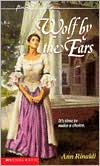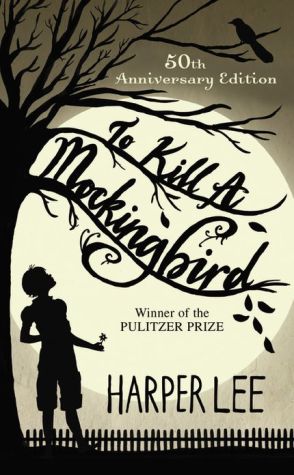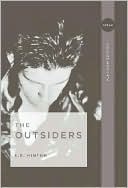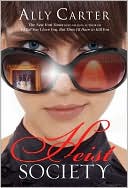Wolf by the Ears
Harriet Hemings has always been happy in the comfortable, protected world that is Monticello. She's been well treated there; no one has ever called her a slave. But that is what she is, a slave of a man who wrote the Declaration of Independence. And there are rumors that she might be more than Thomas Jefferson's slave -she might be his daughter. \ Now Harriet has to make a choice - to run to freedom or to stay. If she stays, she'll remain a slave. But how can she choose freedom, if it means...
Search in google:
Harriet Hemings has always been happy in the comfortable, protected world that is Monticello. She's been well treated there; no one has ever called her a slave. But that is what she is, a slave of a man who wrote the Declaration of Independence. And there are rumors that she might be more than Thomas Jefferson's slave -she might be his daughter. Now Harriet has to make a choice - to run to freedom or to stay. If she stays, she'll remain a slave. But how can she choose freedom, if it means leaving behind her family, her race, and the only home she 's ever known.Publishers Weekly`` . . . And we can neither hold him, nor safely let him go.'' Thomas Jefferson's metaphor for slavery is dramatically brought to life through his illegitimate daughter (Rinaldi suggests) by a slave woman. In this thoughtful fictionalization, 19-year-old Harriet Hemings is one of many ``nigra servants'' on Jefferson's estate. Light-skinned, with red hair, Harriet knows she is different; and although the master has granted the servants' freedom when they reach 21, no one ever suggests that he is their father. Now Harriet must choose between the place and the people she loves and the frightening, often deceitful world of freedom. The subtly crafted style of Harriet's journal entries grows with her as she becomes more aware of the ``velvet trap'' of her life at Monticello. This is an intelligent yet earthy history that lends insight into the complex feelings surrounding race relations. Ages 12-up. (Apr.)
\ Publishers Weekly\ - Publisher's Weekly\ `` . . . And we can neither hold him, nor safely let him go.'' Thomas Jefferson's metaphor for slavery is dramatically brought to life through his illegitimate daughter (Rinaldi suggests) by a slave woman. In this thoughtful fictionalization, 19-year-old Harriet Hemings is one of many ``nigra servants'' on Jefferson's estate. Light-skinned, with red hair, Harriet knows she is different; and although the master has granted the servants' freedom when they reach 21, no one ever suggests that he is their father. Now Harriet must choose between the place and the people she loves and the frightening, often deceitful world of freedom. The subtly crafted style of Harriet's journal entries grows with her as she becomes more aware of the ``velvet trap'' of her life at Monticello. This is an intelligent yet earthy history that lends insight into the complex feelings surrounding race relations. Ages 12-up. (Apr.)\ \ \ \ \ School Library JournalGr 7-12-- This historical novel explores the life of Harriet Hemings, one of Jefferson's household slaves and possibly his daughter. While the character of Harriet is largely fictional, her story is set firmly within an authentic historical context. The plot is revealed through Harriet's diary, a device that occasionally seems forced. A very light-skinned slave, she is favored in the Monticello household where she feels secure and protected. Other less fortunate members of the slave community urge her to make plans to take her freedom when she turns 21, a freedom that Jefferson has promised to all of the children of his supposed mistress, Sally Hemings. It is not until she is almost raped by the drunken husband of Jefferson's granddaughter that Harriet begins to contemplate what life might be like at Monticello after Jefferson dies. Thus, she makes the decision to move to Washington, D. C., and to pass as white. Knowing that this is her best hope for a decent life does not prevent her from feeling guilt over abandoning her race or grief over leaving behind all that she knows and loves. The moral dilemmas Harriet faces are played out against the backdrop of Jefferson's own ambivalence about the institution of slavery. The most telling observation in the novel is that the whites find slavery most repugnant when those enslaved look almost white themselves. Harriet's plight is poignant, and she is a finely drawn, believable character. The racism inherent in the enslavement of Africans is clearly exposed. The evils of slavery appear in a stark light even in the relatively benign environment of Monticello. Exploring the thoughts and feelings of both blacks and whites, this book should provide readers with insights into one of the most significant moral problems in American history. --Bruce Anne Shook, Mendenhall Middle School, Greensboro, NC\ \








